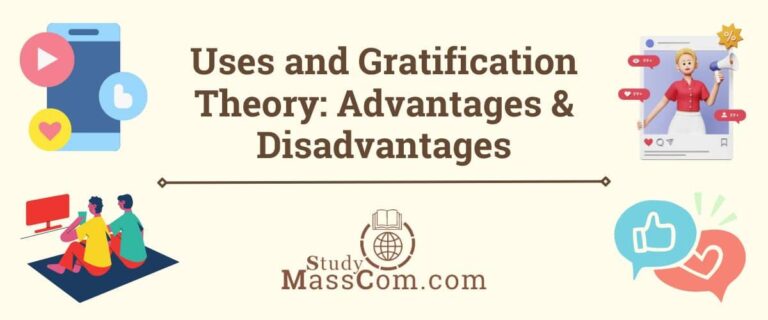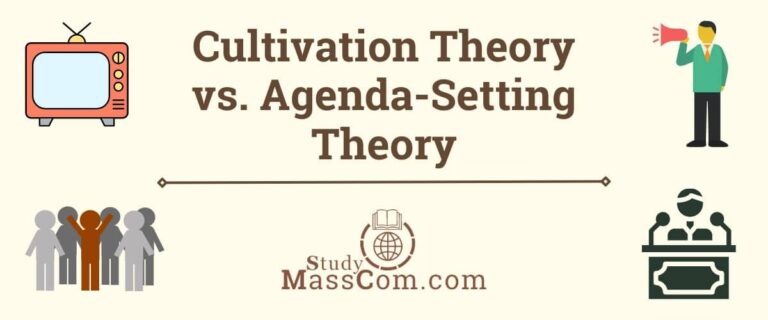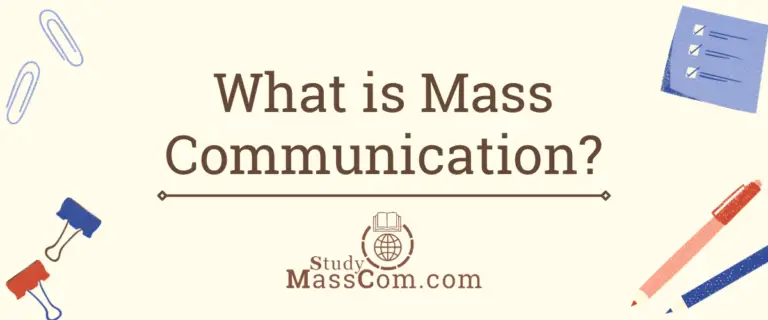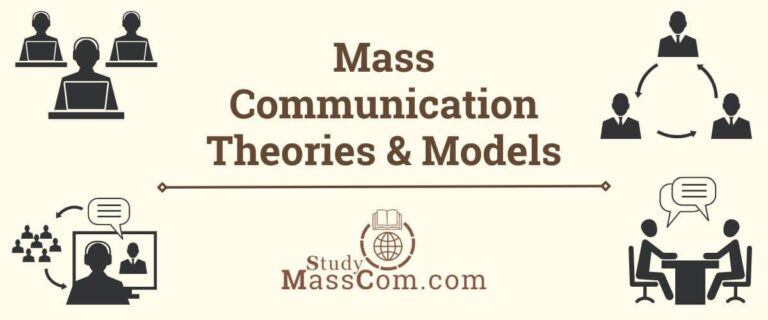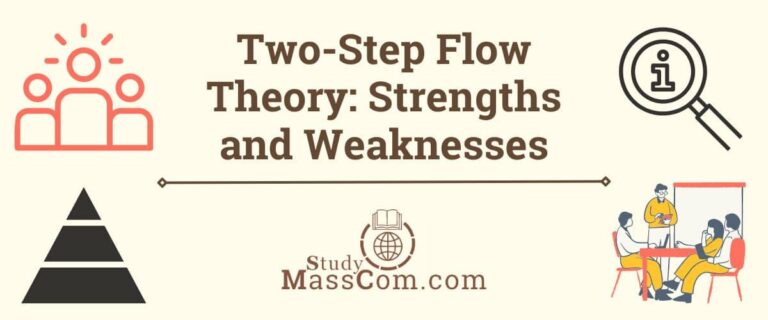Knapp’s Relational Development Model Explained
Interpersonal relationships play a crucial role in our lives, influencing our emotions, behaviors, and overall well-being. To understand the dynamics of these relationships, various theories and models have been proposed by scholars in the field of communication studies. One such prominent model is Knapp’s Relational Development Model, which provides a comprehensive framework for understanding how relationships evolve with time.

Introduction to Knapp’s Relational Development Model
Developed by communication scholar Mark L. Knapp in the 1970s, Knapp’s Relational Development Model outlines the stages that individuals typically progress through as they form and maintain interpersonal relationships. This model is widely recognized and studied in the fields of communication, psychology, and sociology due to its applicability in understanding various types of relationships, including romantic, platonic, and professional.
Knapp’s model consists of ten stages divided into two main phases: the coming together phase, which encompasses stages one through five, and the coming apart phase, which includes stages six through ten. Each stage represents a distinct set of behaviors, communication patterns, and emotional dynamics that characterize the evolving nature of relationships.
Definition of Knapp’s Relational Development Model
Knapp’s Relational Development Model consists of ten stages divided into two main phases: the coming together phase and the coming apart phase. In the coming together phase, individuals progress from the initiating stage, where initial encounters occur, to the bonding stage, characterized by formal commitment. Conversely, the coming apart phase involves stages such as differentiating, circumscribing, and terminating, marking the decline and dissolution of the relationship. Knapp’s model provides insights into the behaviors, communication patterns, and emotional dynamics that characterize each stage of relationship development, offering a comprehensive understanding of the complexities inherent in interpersonal connections.
Learn about the interesting features Dance’s Helical Model of Communication.
10 Stages of Relational Development: The Coming Together Phase
Here are the first five stages of Knapp’s Relational Development Model, also known as the Coming Together Phase in Relationship Development:
Stage One: Initiating
The initiating stage marks the initial encounter between two individuals. During this stage, people engage in small talk, exchange pleasantries, and make initial impressions. Communication is often superficial and guided by social norms and expectations. This stage sets the foundation for further interaction and determines whether individuals will proceed to the next stage of relationship development.
Stage Two: Experimenting
In the experimenting stage, individuals engage in more meaningful conversations and begin to explore common interests, values, and beliefs. This stage is characterized by curiosity and a desire to learn more about the other person. People may engage in activities together to further assess compatibility and build rapport.
Stage Three: Intensifying
As the relationship progresses, the intensifying stage involves deeper emotional and personal disclosures. Individuals develop a stronger bond and begin to express affection and commitment openly. This stage is marked by increased communication frequency, shared experiences, and the formation of a sense of closeness and connection.
Stage Four: Integrating
In the integrating stage, individuals begin to merge their identities and lives, both socially and emotionally. They develop a shared social circle, engage in joint activities, and may start referring to themselves as a couple or a unit. This stage represents a significant level of commitment and interdependence within the relationship.
Stage Five: Bonding
The bonding stage is the culmination of the coming together phase and represents a formal commitment to the relationship. This stage may involve rituals or symbolic gestures, such as marriage or the exchange of vows, signifying a deepened commitment and a sense of permanence.
Read about the Gatekeeping Theory in detail.
10 Stages of Relational Development: The Coming Apart Phase
Here are the next five stages of Knapp’s Model, also known as the Coming Apart Phase in Relationship Development:
Stage Six: Differentiating
Following the bonding stage, relationships may enter the coming apart phase, starting with the differentiating stage. In this stage, individuals begin to assert their identities and interests, leading to a sense of differentiation. Differences and conflicts may arise as individuals prioritize their personal needs and autonomy over the relationship.
Stage Seven: Circumscribing
The circumscribing stage is characterized by communication restrictions and a decrease in the quality and quantity of interaction. Individuals may avoid discussing sensitive topics or may withdraw emotionally from the relationship. This stage reflects growing tension and dissatisfaction as the relationship experiences strain.
Stage Eight: Stagnating
In the stagnating stage, the relationship reaches a standstill, with little to no growth or development. Communication becomes minimal and routine, lacking depth or emotional connection. Individuals may feel trapped or disillusioned, and the relationship may feel stagnant or devoid of vitality.
Stage Nine: Avoiding
As dissatisfaction and discomfort increase, individuals may actively seek to avoid each other or minimize contact. They may make excuses to spend time apart or engage in behaviors that create physical or emotional distance. Avoidance serves as a coping mechanism to mitigate discomfort and conflict within the relationship.
Stage Ten: Terminating
The final stage of Knapp’s model is termination, where the relationship comes to an end. This stage may involve a formal decision to part ways or a gradual fading of the relationship. Individuals may experience a range of emotions, including sadness, relief, or acceptance, as they navigate the process of closure and separation.
Explore the pros and cons of Berlo’s SMCR Model of Communication.
Critique and Applications of Knapp’s Relational Development Model
While Knapp’s Relational Development Model provides a valuable framework for understanding the stages of interpersonal relationships, it has been subject to critique and refinement over the years. Some scholars argue that the model oversimplifies the complexities of relationship dynamics and fails to account for individual differences, cultural influences, and situational factors that shape relationship development.
Despite these critiques, Knapp’s model continues to be widely used in research and practical applications, serving as a foundation for understanding and analyzing interpersonal relationships in various contexts. The model has been applied in therapeutic settings to guide relationship counseling and intervention strategies, as well as in organizational settings to improve team dynamics and communication.
What is the Magic Multiplier Theory? Learn more with us.
Example of Knapp’s Relational Development Model
To illustrate Knapp’s Relational Development Model, let’s consider a hypothetical scenario involving two individuals, Alex and Jamie, as they navigate through the stages of their relationship:
1. Initiating Stage
Alex and Jamie meet at a social gathering and engage in small talk about their shared interest in hiking. They exchange pleasantries and make initial impressions of each other.
2. Experimenting Stage
Alex and Jamie continue to interact, exchanging contact information and arranging to go on a hike together. During their hike, they discuss their favorite trails, outdoor experiences, and personal interests, exploring common ground.
3. Intensifying Stage
Alex and Jamie begin to spend more time together, sharing personal stories and feelings. They express mutual affection and admiration, and their communication becomes more frequent and intimate.
4. Integrating Stage
Alex and Jamie introduce each other to their friends and family, integrating their social circles. They start planning future hikes and other activities together, indicating a growing sense of commitment and partnership.
5. Bonding Stage
Alex and Jamie decide to move in together, symbolizing their formal commitment to the relationship. They exchange keys to their apartment and discuss long-term goals, solidifying their bond.
6. Differentiating Stage
Over time, Alex and Jamie begin to assert their individual identities and interests. They have disagreements about how to spend their free time and prioritize their personal goals, leading to tension in their relationship.
7. Circumscribing Stage
Alex and Jamie avoid discussing certain topics that lead to conflict, and their communication becomes more superficial and routine. They start spending less time together and withdraw emotionally from the relationship.
8. Stagnating Stage
The relationship reaches a standstill, with little growth or development. Alex and Jamie’s communication becomes minimal, and they feel stuck in a routine that lacks emotional depth or connection.
9. Avoiding Stage
Alex and Jamie actively seek to avoid each other, making excuses to spend time apart. They engage in activities independently and minimize contact, attempting to cope with the growing discomfort in the relationship.
10. Terminating Stage
Eventually, Alex and Jamie decide to end their relationship. They have a candid conversation about their feelings and mutual decision to part ways. They experience a range of emotions, including sadness and relief, as they navigate the process of closure and separation.
This hypothetical example illustrates how Knapp’s Relational Development Model can be applied to analyze the progression of a relationship, from its initial stages of formation to its eventual dissolution.
Read about the TV News Production Process.
Knapp’s Relationship Development Model in Movies
Knapp’s Relational Development Model can be observed in various movies as characters navigate through the stages of interpersonal relationships. Let’s explore how this model is exemplified in the context of popular films:
When Harry Met Sally… (1989)

Initiating Stage: Harry and Sally meet for the first time when they share a car ride to New York City. Their initial interaction is characterized by banter and skepticism about whether men and women can be friends.
Intensifying Stage: Harry and Sally begin spending more time together after reconnecting years later. They share personal stories and emotional experiences, deepening their bond.
Integrating Stage: Harry and Sally introduce each other to their respective social circles and become part of each other’s lives. They develop a close friendship and rely on each other for support.
Bonding Stage: The climax of the film features Harry and Sally confessing their love for each other and sharing a kiss on New Year’s Eve, symbolizing their formal commitment to a romantic relationship.
(500) Days of Summer (2009)

Initiating Stage: Tom and Summer meet at work, and Tom is immediately infatuated with her. They engage in small talk and exchange phone numbers.
Experimenting Stage: Tom and Summer go on dates and explore their compatibility. They share personal anecdotes and interests, enjoying each other’s company.
Differentiating Stage: As the relationship progresses, Tom and Summer’s differences become more apparent. Summer’s reluctance to commit and Tom’s desire for a serious relationship create tension and conflict.
Circumscribing Stage: Tom and Summer’s communication becomes strained as they avoid discussing their relationship problems. They start distancing themselves emotionally, leading to the deterioration of their connection.
Terminating Stage: After a tumultuous breakup, Tom and Summer part ways. Tom experiences a period of mourning and reflection before ultimately finding closure and moving on.
Eternal Sunshine of the Spotless Mind (2004)

Intensifying Stage: Joel and Clementine meet on a train and feel an immediate connection. They embark on a passionate and intense relationship, sharing intimate moments and forming a strong emotional bond.
Differentiating Stage: Over time, Joel and Clementine’s relationship deteriorates as they struggle to reconcile their differences and past conflicts. They argue frequently and grow apart.
Avoiding Stage: Joel and Clementine attempt to erase memories of each other through a procedure that removes specific memories. They avoid confronting the pain of their failed relationship by seeking to erase it from their minds.
Terminating Stage: Despite their efforts to forget each other, Joel and Clementine are drawn back together by the lingering emotions and memories they share. They confront the complexities of their relationship and decide to give it another chance, embracing the challenges and uncertainties ahead.
These examples from popular films demonstrate how Knapp’s Relational Development Model can be applied to analyze the progression of relationships depicted on screen, offering insights into the stages of interpersonal connections and the dynamics of human interaction.
Knapp’s Model of Relational Development in the Digital Age
Knapp’s Model of Relational Development offers valuable insights into the dynamics of interpersonal relationships, but its application in the digital age requires consideration of how technology influences communication and interaction patterns. Here’s an exploration of how each stage of Knapp’s model manifests in the context of digital relationships:
1. Initiating Stage
In the digital age, initiating a relationship often occurs through online platforms such as social media, dating apps, or online forums. Initial encounters may involve sending friend requests, likes, or direct messages, where individuals engage in virtual small talk to establish a connection.
2. Experimenting Stage
Digital communication platforms provide ample opportunities for experimenting with various forms of communication, including text messages, voice calls, video chats, and emojis. Individuals may explore common interests and values through online interactions, sharing photos, links, and multimedia content.
3. Intensifying Stage
As the relationship progresses, digital communication facilitates deeper emotional disclosures and interactions. Individuals may engage in lengthy text conversations, share personal stories and feelings, and express affection through virtual gestures such as sending digital gifts or creating shared online spaces.
4. Integrating Stage
Digital platforms play a significant role in integrating individuals’ lives in the digital age. Couples may create joint social media accounts, share passwords to online accounts, and document their relationship milestones through posts, photos, and videos shared with their online network.
5. Bonding Stage
Digital rituals and symbols, such as changing relationship status on social media, posting anniversary messages, or creating digital collages, serve as expressions of commitment and bonding in the digital age. Couples may also engage in online activities together, such as playing multiplayer games or watching streaming content.
6. Differentiating Stage
Despite the convenience of digital communication, conflicts and differences can arise, leading to tensions in the relationship. Miscommunications via text, disagreements over online activities, or jealousy triggered by social media interactions can contribute to differentiation and conflict.
7. Circumscribing Stage
In the face of relationship challenges, individuals may withdraw or limit their digital interactions. They may avoid discussing sensitive topics online, reduce the frequency of communication, or refrain from sharing personal information or emotions through digital channels.
8. Stagnating Stage
Digital relationships may enter a stagnation phase characterized by repetitive and routine interactions. Conversations become predictable, and individuals may feel emotionally disconnected despite maintaining digital communication channels.
9. Avoiding Stage
In the digital realm, avoidance behaviors may manifest through online activities such as ghosting (sudden cessation of communication), unfollowing or blocking one another on social media, or deliberately ignoring messages or notifications from the other person.
10. Terminating Stage
Digital relationships may come to an end through various online actions, such as changing relationship status, deleting shared digital content, or unfriending/blocking the other person on social media platforms. Despite the digital nature of the breakup, individuals may experience emotional distress and require digital space to heal and move on.
In conclusion, Knapp’s Model of Relational Development remains relevant in the digital age, providing a framework for understanding how relationships evolve in online and digital environments. By considering the unique dynamics of digital communication platforms and online interactions, individuals can navigate the stages of relational development and cultivate meaningful connections in the digital realm.
Explore the seven important in any communication process.
Conclusion
Knapp’s Relational Development Model offers a comprehensive framework for understanding the stages of interpersonal relationships, from formation to dissolution. By delineating the key stages and associated behaviors, the model provides insights into the dynamics of human connections and the factors that influence relationship development.
While the model has its limitations, its enduring relevance and applicability underscore its significance in the field of communication studies. As researchers continue to explore the complexities of interpersonal relationships, Knapp’s model serves as a valuable tool for analyzing and interpreting the intricate processes that shape our interactions with others.
In conclusion, Knapp’s Relational Development Model remains a foundational theory in the study of interpersonal relationships, offering valuable insights into the stages of relationship development and the factors that influence their progression. As our understanding of human relationships evolves, Knapp’s model continues to inform research, practice, and everyday interactions, contributing to our collective knowledge of the complex dynamics of human connection.
Learn about some important Mass Communication Theories and Models with us!
FAQs
Knapp’s Stage Model of Relationship Development is a theoretical framework proposed by communication scholar Mark L. Knapp. It outlines ten sequential stages that individuals typically experience as they form and maintain interpersonal relationships. The model is divided into two main phases: the coming together phase, which includes stages from initiating to bonding, and the coming apart phase, which includes stages from differentiating to terminating. Each stage represents a distinct set of behaviors, communication patterns, and emotional dynamics that characterize the progression of relationships from initiation to dissolution.
Knapp’s Relationship Model is important because it provides a comprehensive framework for understanding the dynamics of interpersonal relationships. By delineating the stages that individuals typically progress through in their relationships, the model offers insights into the complexities of human interaction, communication, and emotional development. It helps researchers, counselors, and individuals alike to identify and navigate the various stages of relationship development, anticipate challenges, and foster healthy, meaningful connections. Additionally, Knapp’s model serves as a foundation for studying and analyzing a wide range of relationships, including romantic, platonic, familial, and professional, contributing to our understanding of human behavior and social dynamics.
Knapp’s Relational Development Model consists of ten stages, divided into two main phases: the coming together phase and the coming apart phase. Each stage represents a distinct set of behaviors, communication patterns, and emotional dynamics that characterize the evolution of interpersonal relationships.
The first stage in Knapp’s Model of Coming Together is the Initiating stage. In this stage, individuals engage in initial encounters with one another. Communication is often superficial, guided by social norms and expectations. People exchange pleasantries, engage in small talk, and make first impressions, setting the foundation for further interaction and relationship development. This stage is characterized by efforts to establish rapport and assess mutual interest, marking the beginning of the relational journey toward deeper connection and intimacy.
Knapp’s Relationship Termination Model consists of five stages that include Differentiating (individuals assert their identities, and differences become more apparent), Circumscribing (communication decreases, and individuals avoid discussing sensitive topics, leading to a decline in the quality of interaction), Stagnating (the relationship reaches a standstill with minimal growth, routine communication, and emotional depth), Avoiding (individuals actively seek to avoid each other, creating physical or emotional distance), and Terminating (the final stage involves the formal ending of the relationship, whether through a mutual decision, gradual separation, or a clear break). Each stage reflects the gradual disengagement and dissolution of the relationship.
Not all relationships go through every stage in Knapp’s Relational Model due to various factors such as individual differences, external circumstances, and the nature of the relationship. Some relationships may progress quickly through certain stages or skip stages altogether based on compatibility, communication styles, and the level of commitment. Additionally, external factors such as distance, timing, and life events can impact the progression of a relationship. Moreover, relationships that end prematurely or abruptly may not reach the later stages of the model. Overall, the progression through the stages of Knapp’s model varies based on the unique dynamics of each relationship.

